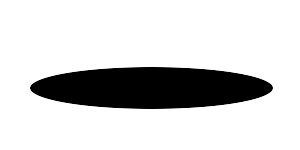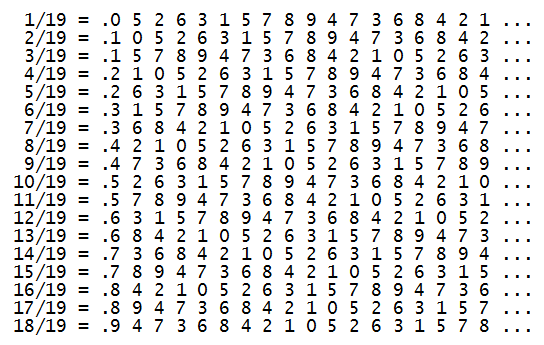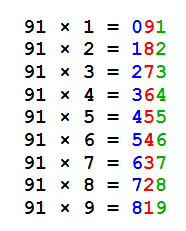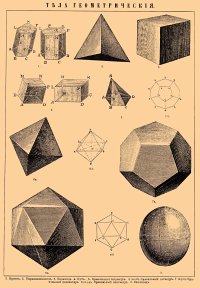I place $20 in a box.
So do you.
Now the box contains $40, and we both know it.
I sell the box to you for $30.
And we both walk away with a $10 profit.
(Thanks, Ben.)
I place $20 in a box.
So do you.
Now the box contains $40, and we both know it.
I sell the box to you for $30.
And we both walk away with a $10 profit.
(Thanks, Ben.)
Choose any number and write down its divisors:
14
1 2 7 14
Then write down the number of divisors of each of these divisors:
14
1 2 7 14
1 2 2 4
Now the square of the sum of this last group will always equal the sum of its members’ cubes:
(1 + 2 + 2 + 4)2 = 13 + 23 + 23 + 43
Discovered by Joseph Liouville.

Do holes exist? That is, if a hole is merely a void or vacancy in a surrounding substance, then properly speaking is the hole a thing in itself? Philosopher Roberto Casati writes, “Ask any person to tell you what holes are — ‘real,’ everyday holes, not the abstract holes of geometry – and he will likely elaborate upon absences, nonentities, nothingnesses, things that are not there. Are there such things?”
A hole story from John Timbs’ 1873 A Century of Anecdote:
A gentleman, one Sunday morning, was attracted to watch a young country girl on the high road from the village to the church, by observing that she looked hither and thither, this way and that upon the road, as if she had lost her thimble. The bells were settling for prayers, and there was no one visible on the road except the girl and the gentleman, who recognised in her the errand-maid of a neighbouring farmer. ‘What are you looking for, my girl?’ asked the gentleman, as the damsel continued to pore along the dusty road. She answered, gravely: ‘Sir, I’m looking to see if my master be gone to church.’ Now, her master had a wooden leg.
In number theory, a Holey prime is a prime number made up exclusively of the digits 4, 6, 8, 9, and 0 — digits whose Arabic numerals contain “holes.” Ironically, these get pretty substantial: The largest known specimen is a 4 followed by 16,131 9s.
What’s remarkable about these numbers?

They form a perfect magic square. Each row, column, and diagonal adds to 81.
W.S. Andrews wrote, “Considering its constructive origin and interesting features, this square, notwithstanding its simplicity, may be fairly said to present one of the most remarkable illustrations of the intrinsic harmony of numbers.”

Someone in whose power I am tells me that I am going to be tortured tomorrow. I am frightened, and look forward to tomorrow in great apprehension. He adds that when the time comes, I shall not remember being told that this was going to happen to me, since shortly before the torture something else will be done to me which will make me forget the announcement. This certainly will not cheer me up, since I know perfectly well that I can forget things, and that there is such a thing as indeed being tortured unexpectedly because I had forgotten or been made to forget a prediction of the torture: that will still be a torture which, so long as I do know about the prediction, I look forward to in fear. He then adds that my forgetting the announcement will be only part of a larger process: when the moment of torture comes, I shall not remember any of the things I am now in a position to remember. This does not cheer me up, either, since I can readily conceive of being involved in an accident, for instance, as a result of which I wake up in a completely amnesiac state and also in great pain; that could certainly happen to me, I should not like it happen to me, nor to know that it was going to happen to me. He know further adds that at the moment of torture I shall not only not remember the things I am now in a position to remember, but will have a different set of impressions of my past, quite different from the memories I now have. I do not think that this would cheer me up, either. For I can at least conceive the possibility, if not the concrete reality, of going completely mad, and thinking perhaps that I am George IV or somebody; and being told that something like that was going to happen to me would have no tendency to reduce the terror of being told authoritatively that I was going to be tortured, but would merely compound the horror. Nor do I see why I should be put into any better frame of mind by the person in charge adding lastly that the impressions of my past with which I shall be equipped on the eve of torture will exactly fit the past of another person now living, and that indeed I shall acquire these impressions by (for instance) information now in his brain being copied into mine. Fear, surely, would still be the proper reaction: and not because one did not know what was going to happen, but because in one vital respect at least one did know what was going to happen — torture, which one can indeed expect to happen to oneself, and to be preceded by certain mental derangements as well. If this is right, the whole question seems now to be totally mysterious.
— Bernard Williams, Problems of the Self, 1973

Well, it’s our old friend the mysterious pouch. Today the pouch contains a random quantity of marbles, and we’re going to withdraw a handful. But first, consider:
This is troubling. Without even opening the pouch we seem to have decided that, on balance, we’re more likely to withdraw an odd number of marbles than an even. Indeed, this seems to mean that handfuls in general are more commonly odd than even. How can this be?

In 1688, John Locke received a letter from scientist William Molyneaux posing a curious philosophical riddle: Suppose a blind man learned to identify a cube and a sphere by touch. If the shapes were then laid before him and his vision restored, could he identify them by sight alone?
Locke responded, “Your ingenious problem will deserve to be published to the world,” and he included a formulation of the problem in the second edition of the Essay Concerning Human Understanding.
Three hundred years later, it’s still an open question. (Locke agreed with Molyneaux that the answer is probably no: “The blind man, at first sight, would not be able with certainty to say which was the globe, which the cube, whilst he only saw them; though he could unerringly name them by his touch, and certainly distinguish them by the difference of their figures felt.”)

When I think of a unicorn, what I am thinking of is certainly not nothing; if it were nothing, then, when I think of a griffin, I should also be thinking of nothing, and there would be no difference between thinking of a griffin and thinking of a unicorn. But there certainly is a difference; and what can the difference be except that in the one case what I am thinking of is a unicorn, and in the other a griffin? And if the unicorn is what I am thinking of, then there certainly must be a unicorn, in spite of the fact that unicorns are unreal. In other words, though in one sense of the words there certainly are no unicorns–that sense, namely, in which to assert that there are would be equivalent to asserting that unicorns are real–yet there must be some other sense in which there are such things; since, if there were not, we could not think of them.
— G.E. Moore, Philosophical Studies, 1922